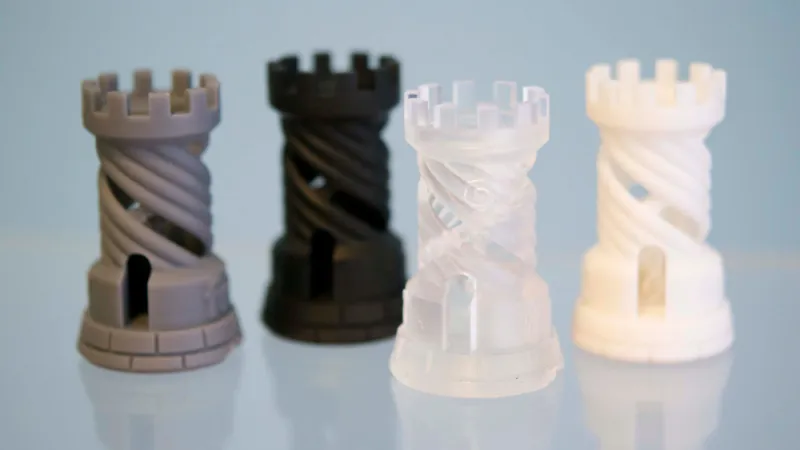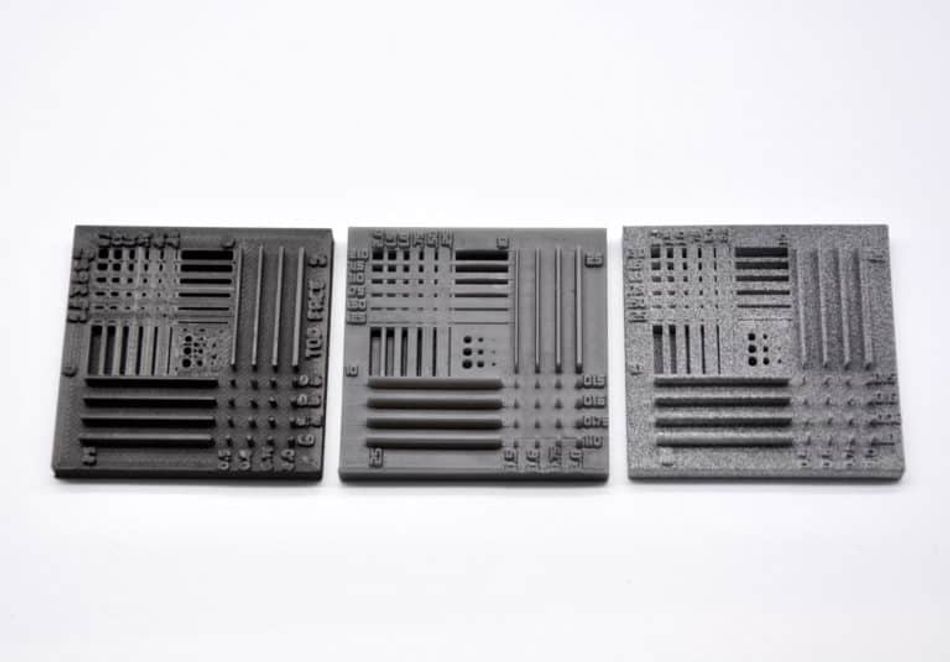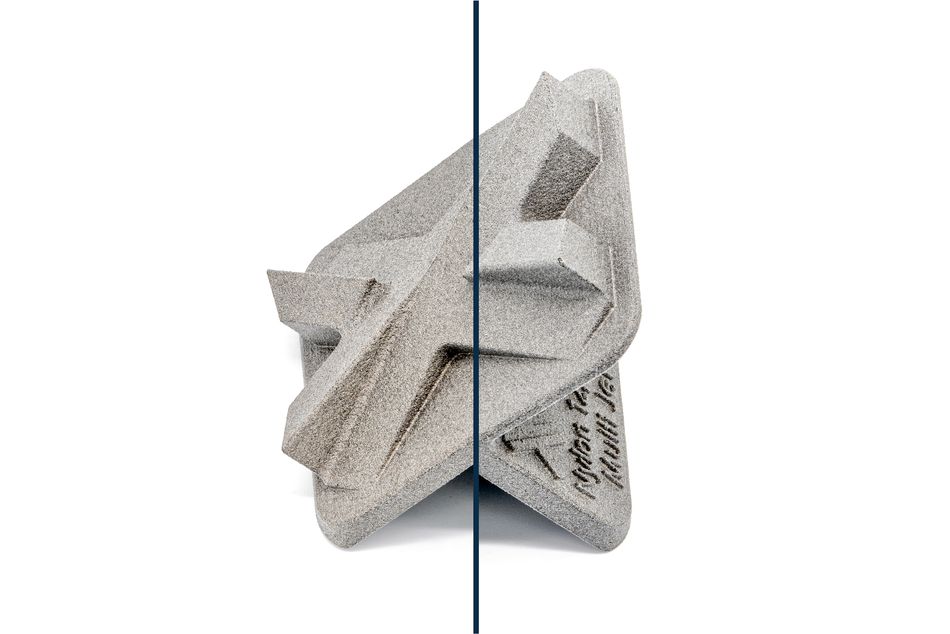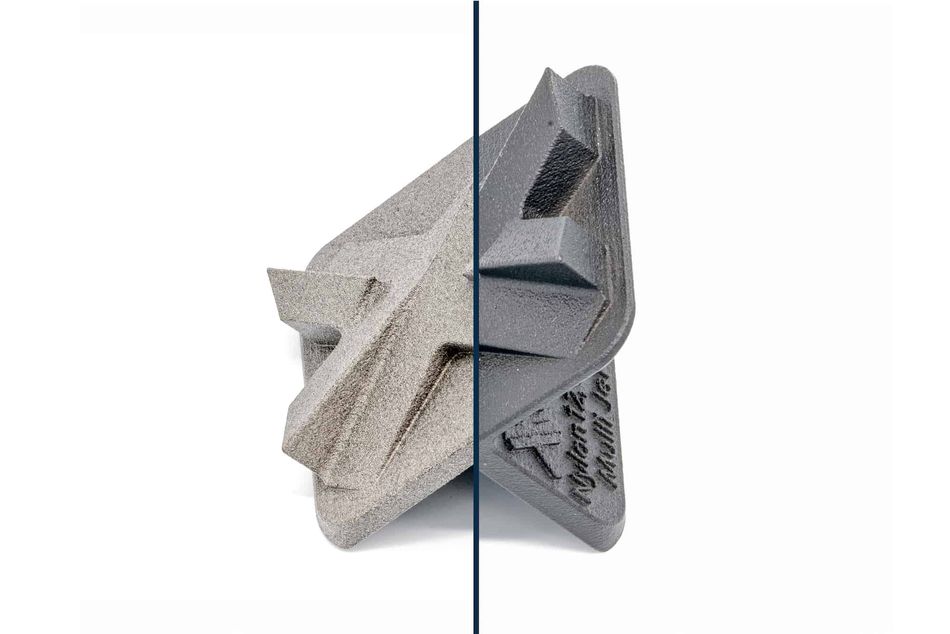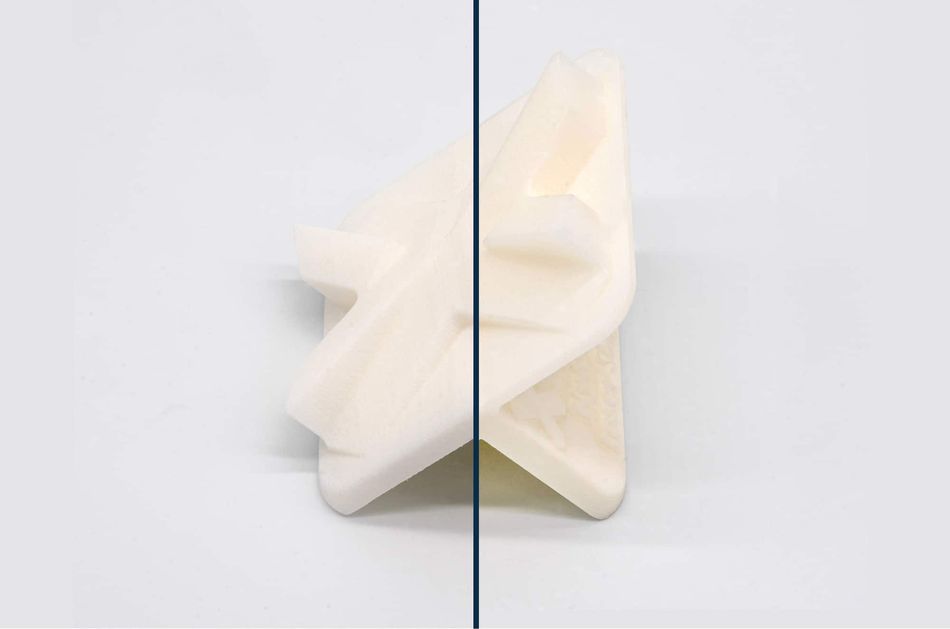How to Get a Smooth Surface With 3D Printing
In this article, we will explore the factors that affect the smoothness of 3D printed parts and how you can achieve high levels of smoothness.
This article was first published on
xometry.euParts with a smooth surface finish are often required in 3D printing. This characteristic may be a functional requirement for the end-use of a part or an aesthetic requirement. Applications in which smoothness may be a functional requirement include mating parts, moving parts, stress/load-bearing surfaces, etc.
Although 3D printing is usually a layer-by-layer process, additive manufacturing technologies are capable of printing relatively smooth surfaces. However, the smoothness of finished 3D printed parts depends on the printing process, the material, the post-processing operations and other secondary factors that will be related in this article.
3D printing technologies with a smooth surface finish
Because of the layer by layer printing involved in FDM printing and the diameter of the nozzle, FDM doesn’t always produce a very smooth surface finish. However, modern industrial FDM machines are capable of much finer surfaces. SLS, MJF, and DMLS produce a grainy surface as a result of the powdery nature of the raw materials used in these technologies. Regardless of 3D printing technology, a smooth surface can always be achieved in printed parts, using post-processing operations.
There are several 3D printing technologies capable of producing smooth as-printed parts. Those are explored below.
SLA 3D printing
Stereolithography 3D printing produces parts with the highest accuracy and smoothest surface finish among all 3D printing technologies. Although it is a layer-by-layer process, the raw material is usually in resin form and solidifies to give a smooth surface.
Polyjet 3D printing
Like SLA, Polyjet prints photopolymers. Most Polyjet parts are ready to use as-printed in terms of look and feel. The main reason for this smoothness is the combination of ultra-thin layer printing and high-quality resin.
Carbon DLS
Carbon DLS uses resin materials like polyurethane. The surface finish of the 3D part produced with this method is as smooth as glass. This process produces impeccable parts that can replace prototypes from MJF or SLS. In addition to a high-quality surface finish, Carbon DLS produces external and internal details perfectly.
3D printing materials with a smooth surface
Material consideration for smoothness typically goes together with printing process consideration, as, in most cases, the process is a far more significant factor. Thermoplastics, thermosetting resins, photopolymers, and polyurethane are typically 3D printing materials with a smooth surface finish.
But it is important to note that smoothness is rarely the only criteria for selecting materials. Other considerations like strength, heat resistance and accuracy are also considered.
Improving smoothness with post-processing
Post-processing is the most effective way of guaranteeing a smooth surface finish in 3D printing. In most cases, post-processing can be used to achieve smoothness in a part, irrespective of the material or the technology with which it was printed.
There are various post-processing methods that are not all suitable for all parts. Part geometry and material are the two biggest factors that influence post-processing techniques. Note that the different methods will deliver different textures and appearances.
Bead Blasting
The bead blasting technique involves spraying a pressurized stream of tiny beads of media (plastic or glass) from a nozzle onto the surface of the part. This removes the layer lines leaving a smooth finish. In addition, the end product resembles a uniform matte finish. Bead blasting is done in a closed chamber. Plastic bead blasting is more common for 3D printed parts. The finishing technique works with most FDM-printed parts and materials.
The plastic media is usually made up of finely reground thermoplastic particles; the abrasiveness can vary from harsh to mild. Another popular material used in bead blasting is baking soda.
One of the advantages of bead blasting over sanding is speed. The process takes about 5 to 10 min for a part. However, the duration will depend on the part size. Another advantage of bead blasting is the preservation of the part’s dimensions.
Vapour Smoothing
The industrial vapour smoothing device operates through a multistage process. It lowers the pressure within the sealed chambers containing the 3D printed parts. Then, a heated tray at the bottom receives the pumped solvent, turning it into vapour.
An air-circulation system pulls the resulting vapour and circulates it around the surface of the part, causing condensation on the surface. This melts away the surface of the printed part, leaving a smooth surface. The precise control of the airflow and temperature allows for desired results without over smoothing.
This process takes about three hours to completely smoothen the printed part regardless of the quantity or size. Also, safety is paramount as the chamber must be locked during operation to create a vacuum. The condensed and unused solvent drops to the bottom of the tank for reuse.
Vapour smoothing can cater for parts made with ASA, ABS, and other high-impact polystyrenes. However, polycarbonate and other polymers that melt under the solvent can get smoothened. Acetone is an example of a solvent that works in vapour smoothing.
Vapour smoothing is commonly applied in consumer products. The process does not significantly impact the dimensional accuracy of the 3D-printed part. Furthermore, the parts could be made ready for coating or filming with bead blasting.
A disadvantage of vapour smoothing is its lack of versatility. The process cannot accommodate more materials like sanding or bead blasting.
Tumble Finishing
The tumble finishing technique, also known as tumbling or rumbling, is usually used on relatively small parts. Some of the most common, large tumblers are capable of finishing parts of 400 x 120 x 120 mm or 200 x 200 x 200 mm. It is very effective for parts that contain a high percentage of metal powder.
In just an hour of polishing, the smoothness of metallic prints can be exponentially increased. The tumbling process uses a horizontal barrel filled with parts, media, water, or any other materials. A vibrator rotates the barrel, causing the media (stones) to continuously brush the parts and progressively smoothen them.
Sanding and polishing
Sanding is the process of progressively removing a very thin layer of material to expose a smoother one underneath. A rough surface simply means that some points on the surface are more elevated than others. Sanding is the process of evening out the surface using relatively rough materials such as sanders or grinders.
It can be carried out by hand or with the use of belt sanders and is done progressively. Sanding is most often paired with polishing.
One of the shortcomings of sanding is the difficulty in smoothening small, intricate geometries. Also, sanding may also affect a part’s dimensions. When very tight tolerances are required from the 3D parts, sanding may not be the best option. Consideration must be made during part design concerning the amount of material that will be removed by sanding.
Comparison of post-processing options for a smooth surface finish in 3D printing
| Post-processing | Suitable 3D printing technology | Advantages | Considerations |
| Bead Blasting | SLS, MJF | • Preservation of the part’s dimensions | • Requires the use of extra materials |
| Vapour Smoothing | MJF, SLS | • Shiny surface | • Lack of versatility |
| Tumble Finishing | DMLS, SLS, MJF | • Good for small parts | • Size limitations for large parts exist • Time-consuming |
| Sanding and polishing | FDM, DMLS | • Good for bumpy rough surfaces • Polishing can produce a shiny surface | • Affects the part’s dimension • Not suited for parts with high tolerances • Not suited for parts with intricate geometries |
Factors affecting part smooth surface during printing
The following are some of the factors that influence the smoothness of a 3D printed part during printing.
Extrusion Rate
This factor applies to only printing technologies that print via extrusion, such as FDM. Over extrusion could occur if the printer extrudes excess material than is needed. The resulting print will have each layer projecting from the surface as irregular forms. A simple remedy to this is to adjust the extrusion rate. The same goes for under extrusion.
Material Overheat
When printing with FDM technology, the heating temperature and the cooling rate play vital roles in the surface quality of printed parts. It is important to achieve the appropriate balance between them. Remember the printed plastic can form different shapes before it cools. Always set the printer to the appropriate temperature for the material being printed.
Ghosting/ Rippling
The defect caused by this appears as waves on the surface of the printed part. It occurs when the printer is moving at a faster pace than it can handle the vibrations from the moving parts. This defect is most common in FDM printing where the machine vibrates as the nozzle deposits material.
To avoid this, keep your moving motors well lubricated and balance any shaky parts.
Conclusion
Achieving smoothness in 3D printed parts depends on various factors. These include printing technology, materials, and printing techniques. In most cases, the desired surface smoothness can be achieved using post-processing operations.
Xometry Europe offers fast, reliable, and highly accurate 3D printing services with these technologies and materials. Through our Instant Quoting Engine and our network of over 2,000 manufacturers, we ensure that you experience a seamless part production process, from quoting to doorstep delivery.
